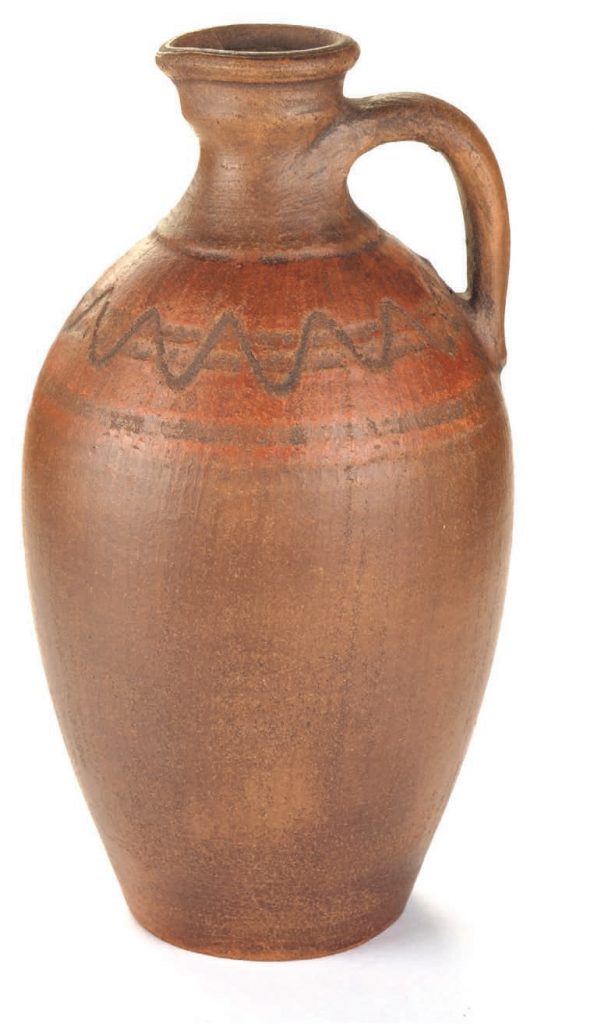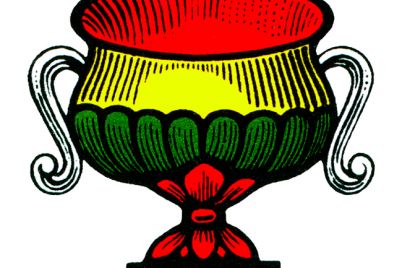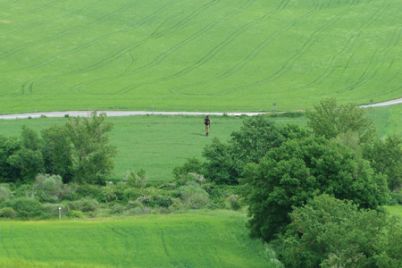“That’ll be €1.50 a litre”. We weren’t talking about the latest hike in gas prices but the cost of the wine sold direct from the cantina. Last year’s Barbera, 13 percent by volume and perfect for the dinner table, was the subject of discussion and with no little enthusiasm. Here the inhabitants of Novi Ligure, the “Novesi”, bring their bottles, demijohns and any other fit-for-the-purpose container to be filled time and again, happy in the knowledge that the product is quality and the price; well, the price can’t be argued with: This is wine country.
Novi Ligure, a small Piemontese working town nestled between the alluvial plain and the first foothills of the Ligurian Alps, is famous for its cycling history, its chocolate and its focacciabread.
A museum dedicated to cycling champions from a bygone age can be found close to the town centre. Costante Girardengo, a phenomenally successful racer and once proclaimed more popular than Mussolini during the inter-war years, was given the honour that every express train should stop at his hometown, previously only awarded to heads of state.
The chocolate brand, Novi, now owned by the Elah-Dufour group, is a household brand in Italy, and its TV commercials carry the slogan “Switzerland? No, Novi.” Seen as a rebuff to imported Swiss chocolate, even for a non-chocoholic like me, the product is up there with the best, and I live in Switzerland.
Focaccia, although widespread in Italy, is particularly popular in Liguria and this southern part of Piemonte and recipes may differ even between towns. The Focaccia Stirata or stretched focaccia of Novi is absolutely wonderful straight from the oven. The olive oil and salt combine with the light, crispy focaccia to set off a chain reaction of gastronomic delight. Taking it home in the car for lunch means a battle of wills with the stomach, as the pervading smell is hard to resist.
Novi Ligure, or rather Novi, as it once was, has a history of being passed from pillar to post. The original town, surrounded by a high wall, was owned by the Milanese Visconti family for many years. In 1447 it was given over to Genoese ownership, albeit temporarily, and the Milanese took back the town, only to lose it again, this time to the French. The Genoese commander Andrea Doria then won it back in 1529. It remained under Genoese control for almost 300 years and was given the addition of “Ligure” due to its historical ties with Genoa.
As you follow the ancient walls of the old medieval part of town, you can take the road known locally as the Lomellina. A small winding road that snakes through the first foothills of the Ligurian Alps, the Lomellina passes vineyards in the clay limestone hills at an altitude of around 400 metres, the vine covered slopes in their summer glory with each branch bearing a weight of fruit of both Cortese and Barbera grapes. It is here where you can find many of the cantinas, the vineyards that will open their doors for wine-tasting and even aperitif hours.
While following the road, a left turn will take you to a tiny village named Monterotondo. The road gets smaller and the drive becomes slower, but it is well worth it. You will eventually arrive at Villa Palavicini, a privately owned estate producing organic wine. To pass the summer days there is a large swimming pool and a bar / restaurant area. The food is typical of the region and the wine a perfect accompaniment. The proprietor, Alessandro, explained that although the production is limited, 80 percent is exported every year to the United States. He is currently busy immersing himself in the export to potential new territories, even to Brazil.
Returning back to the Lomellina, 10 kilometres from Novi is the small medieval town of Gavi, dominated by its castle and known for its white wine, named appropriately Gavi di Gavi, it being named after the town which is at the centre of the Cortese growing region, where the foothills wind slowly up into the Ligurian mountains.
Cortese is the grape that provides us with Gavi di Gavi. The current growing style of this wine dates back to the 1870s, although reports of its production and consumption have existed for hundreds of years. The growing region is now restricted by strict declaration of origin (DOCG) regulations, demanding the wine native to this region is recognised as such.
As for the town itself, there are fewer pleasurable moments in life than to sit outside Bar Matteo, a Gavi institution since 1946, and order an aperitif consisting of a glass of Gavi and a plate of olives from Liguria.
The story of Gavi is an interesting one, if it is to be believed. Around 500 A.D., a Frankish princess named Gavia fell hopelessly in love with one of her guards. Although her father, Clodimir, King of the Franks, forbade the marriage, the couple absconded and married secretly. Their travels took them across the Alps and into the far reaches of the old Frankish kingdom in what is now lower Piemonte.
The couple remained hidden from the king until one evening when the husband, no doubt after a few too many of the local wines, divulged his secret to an innkeeper. News eventually reached the king, who immediately set forth to confront the couple and see that punishment be carried out for their disobedience. However, upon seeing his daughter once again, and the happiness on her face, he decided to bless the couple, and as a gift, he gave them the town which was renamed Gavi, after the princess. The couple lived happily and possibly drunkenly ever after.
From Bar Matteo you can choose any number of small local restaurants to savour the local ravioli of Gavi. A 100-metre walk down towards the church will take you to “Il Girasole,” and a lunch menu, including ravioli, for an exceptionally reasonable price. This wonderful pasta is traditionally offered in three guises in this part of Piemonte; with a ragu sauce, in butter and sage and, for those hardier folk, in red wine, mainly Barbera. This last is popular and rightly so, however changes to the drink-driving laws have meant that many will now avoid risking this dish as the wine is traditionally drunk from the plate after the last of the ravioli has been eaten.
Barbera, the people’s wine, is another Piemonte native although the centre of production is further north-west, around the Monferrato area. The town of Monferrato itself is a lovely little place boasting some decent restaurants and a selection of bars. One bar in particular (there’s always a bar involved somewhere) comes to mind where one evening my girlfriend and I found ourselves outside and as we drank a glass of wine I strained my ears to the sounds of Creedence Clearwater Revival. I happened to mention my admiration for the band and the bar owner had suddenly found himself a new, albeit foreign friend in music. To show his appreciation of my appreciation another glass of wine was put before us, before I’d even finished the previous. As the music continued its 1960s theme, he regaled us with tales of Monferrato during those years, digging out photographs of the local flower power movement – well, 40 or so teenagers in paisley patterned shirts, seated at tables enjoying the pleasures of a jug of wine, as opposed to what many of their contemporaries were doing elsewhere at the time.
The Barbera wine is another DOCG controlled production and there are written records of its existence dating back to the 12th century in Monferrato. Traditionally served as a table wine with any meal both at home and in the trattoria, it is interesting to note that in Piemonte the consumption of this wine 100 years ago was double what it is now, raising the question of whether drinking habits have changed or if consumers now venture away from local wines, preferring instead to sample the vast array of other wines now on sale, from both home and abroad.
Barbera production hit an all-time low in the early 1980s; the industry rocked by scandal related to unscrupulous production methods. As a reaction to this, one man more than most is recognised as having not only halted the decline of the wine but raised its standing in the wine community.
 Giacomo Bologna went to California on a fact-finding mission and returned with ideas for a new approach. Bologna set about using the same small French oak barrels he had seen in the Napa valley vineyards. The difference was astonishing. The wine which left these barrels was a reserve of high quality and was suddenly changing hands at previously unheard of amounts for a Barbera. Although the wine was and is still available in any quality and for any pocket, it is not uncommon to see certain Barbera reserve wines approach the price of their Piemonte peers, Barolo and Barbaresco
Giacomo Bologna went to California on a fact-finding mission and returned with ideas for a new approach. Bologna set about using the same small French oak barrels he had seen in the Napa valley vineyards. The difference was astonishing. The wine which left these barrels was a reserve of high quality and was suddenly changing hands at previously unheard of amounts for a Barbera. Although the wine was and is still available in any quality and for any pocket, it is not uncommon to see certain Barbera reserve wines approach the price of their Piemonte peers, Barolo and Barbaresco
The wine production and consumption in this area is intertwined with the culture and, as a result, various drinking songs have been passed down the years. One in particular I remember hearing during the first wedding I attended in the area, is simply called “Butta giù, butta giù” – In English translated basically as “Down it, down it” and the first verse is thus rendered:
Chi è nato a gennaio Who is born in January
si alzi, si alzi stand up, stand up
chi è nato a gennaio Who is born in January
si alzi in piè! Stand up on his feet
bevilo, bevilo, bevilo drink it, drink it, drink it
bevilo, bevilo tutto drink it, drink it all
bevilo, bevilo, bevilo drink it, drink it, drink it
butta giù, butta giù! Down it, down it
e l’ha bevuto tutto He has drunk it all
e non gli ha fatto male and it hasn’t made him ill
è l’acqua che fa male it’s the water that makes you ill
il vino fa cantar! The wine makes you sing!
Upon ending, the person standing will down his glass. This song will carry on through the rest of the year and it becomes amusing especially at a large table where all the months of the year are probably represented by birthdays. I once saw someone accompany every verse by downing his glass. He disappeared a short while later lamenting the fact he needed to lie down.
In Italy, as in France and Spain, wine is still the preferred drink of the majority of adults, especially at lunch and dinner and hopefully the younger generation will follow, even in this age of Mojito and bottled lager. The trattoria will still serve a jug of wine, which in Piemonte generally means Barbera, to the table. There’s something intrinsically rustic and satisfying about a clay jug of red wine placed in front of you.
There is also something deeply satisfying about those words at the cantina; “that’ll be €1.50 a litre”.
Chris Farley, was born in England, and now lives in Switzerland, where he can be found, sometimes with a drink in hand, continuously in search of his muse.




